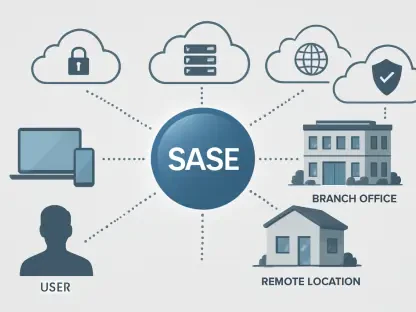The rapid advancement of virtualization technology has transformed traditional IT infrastructures into dynamic environments, enabling greater flexibility and scalability. However, with these benefits come significant security challenges. As businesses increasingly rely on virtualized systems, the importance of securing such environments becomes paramount. A breach at the hypervisor level could potentially compromise all virtual machines hosted on it, exposing sensitive data across an organization’s virtual landscape. Therefore, the need for robust security measures to safeguard virtualized environments is essential in this context.
Virtualization necessitates a multi-layered security approach, focusing on the hardening of various components, including hypervisors, virtual machines, and network configurations. Implementing comprehensive security practices is crucial to protecting these environments from evolving threats. The vulnerability of virtualization infrastructures underscores the necessity for strategic security implementation and continuous monitoring. This article explores key strategies and best practices for securing virtualized environments, addressing both immediate and long-term security concerns for major virtualization platforms like VMware, KVM, and Xen, among others.
Understanding Hypervisor Security Fundamentals
Hypervisor security forms the foundation of a secure virtualized environment, as it serves as the core component managing the underlying physical resources for virtual machines. Compromising the hypervisor can potentially grant an attacker access to every virtual machine it hosts, leading to data breaches and operational disruptions. Attackers may exploit weaknesses in device emulation, shared hardware resources, or direct hardware access capabilities, making hypervisor security a critical focus.
Given the complexity and diverse functionality of modern hypervisors, ensuring their security requires a thorough understanding of potential vulnerabilities and attack vectors. A comprehensive approach to hypervisor security must involve regular updates to patch known vulnerabilities, restricting access to hypervisor management interfaces, and enforcing strict access controls. Security practices should also include the configuration of secure boot processes, minimizing unnecessary features and components to reduce the attack surface, and using hardware-assisted virtualization features where available.
Moreover, integrating security frameworks like SELinux with hypervisors such as KVM can add another layer of defense through mandatory access controls. These practices, combined with regular audits and monitoring, establish a resilient security posture that can adequately address threats. As virtualization technology continues to evolve, maintaining current knowledge of threats and staying abreast of best practices is essential for managing risks effectively in virtualized infrastructures.
Platform-Specific Security Hardening
Different virtualization platforms present unique security challenges and require tailored security practices. For VMware environments, security hardening should encompass ESXi hosts, vCenter Server, and individual virtual machines. Lockdown mode should be enabled on ESXi hosts to restrict management access, forcing management operations through vCenter Server. Implementing role-based access control (RBAC) with minimum privileges and service account separation further fortifies security.
In conjunction with VMware’s hardening guidelines, it’s crucial to disable unnecessary services like SSH unless needed for specific troubleshooting, supplemented by session timeouts and access restrictions when active. Additionally, enabling UEFI Secure Boot protects both hosts and virtual machines by ensuring only signed code runs during boot processes. These measures reduce exposure to vulnerabilities and enhance the overall security posture of VMware platforms.
For KVM environments, reducing the guest-accessible attack surface while maintaining performance and functionality involves specific adjustments. Techniques like removing legacy components and using architecture optimizations can significantly decrease vulnerabilities. Securing memory usage is paramount, with strategies such as disabling Kernel Same-page Merging (KSM) to mitigate side-channel attacks and employing sVirt with SELinux for mandatory access controls, ensuring strict separation between virtual machines.
Xen platforms similarly benefit from isolation techniques like driver and stub domains, which separate critical components from Dom0, minimizing risks by placing QEMU processes in isolated security domains. Collectively, these platform-centric security methodologies cater to the distinctive needs of virtualization infrastructures, fortifying defenses and mitigating potential security threats.
Network Security and Isolation
Network security in virtualized environments is critical, requiring strategic configurations to ensure robust isolation between different network segments. Network segmentation, achieved through Virtual LANs (VLANs), is a fundamental practice that confers layer-2 isolation between sensitive security zones, reducing the risk of lateral movement by attackers. For vSphere environments, configuring VLAN settings through the vSwitch standard port group settings is crucial to establish segmented traffic flows and protect virtual networks.
In KVM deployments, Open vSwitch provides advanced network features such as VLAN tagging and access control to enhance network security. Through careful setup of network policies and firewall rules, organizations can delineate access, enforce stringent control policies, and limit exposure to potential threats. These capabilities enable precise regulation of network traffic within virtualized environments, proving essential to an effective security strategy.
Additionally, securing management interfaces by configuring firewalls to restrict access solely to authorized personnel is imperative. Implementing network drivers in Xen environments further enhances network isolation by effectively segregating network traffic into separate, secure domains. This multi-layered network security approach reduces avenues for attacks and strengthens the entire virtualized infrastructure against unauthorized access and exploitation.
Access Control and Authentication
Securing access to virtualized environments is pivotal and involves implementing advanced access control and authentication mechanisms. Multi-factor authentication (MFA) offers substantial security enhancements by requiring multiple forms of verification before granting access to hypervisor management interfaces. Integration with centralized authentication solutions, like Active Directory for VMware environments, standardizes credential management across the entire infrastructure.
Developing and assigning custom roles tailored to the organization’s needs via role-based access control minimizes exposure by enforcing the principle of least privilege. This method limits user permissions to only those required to perform specific tasks, significantly reducing the risk of malicious activity or accidental data breaches. Regular auditing of roles and permissions is essential to ensuring their continued relevance and security effectiveness.
Account lockout policies form another vital layer of defense by preventing repeated failed login attempts from resulting in brute-force attacks. Configuring these policies carefully ensures reduced risk of unauthorized access without disrupting legitimate user activities. By adopting a thorough approach to access control and authentication, virtualized environments can deter potential attackers and safeguard sensitive information from unauthorized access.
Monitoring and Logging
Monitoring and logging form the backbone of identifying and responding to security incidents within virtualized environments. Comprehensive logging capabilities facilitate the detection of anomalies or unauthorized actions, allowing for prompt incident response and forensic analysis. Centralized log management, achieved through syslog for ESXi and auditd for KVM environments, provides a coherent and systematic view of all operations, enhancing situational awareness.
SIEM integration with virtualization platforms consolidates security events and logs, offering a unified perspective for security teams to identify potential threats or deviations from expected behavior. By employing detailed logging, organizations can fulfill compliance obligations and maintain thorough records for incident investigations. This approach serves as a crucial preventative measure against data breaches, ensuring quick identification and neutralization of threats.
The procedural aspect of monitoring also encompasses setting alerts for specific events such as failed login attempts or unauthorized access attempts. Regular reviews of logs and security audits contribute to ongoing improvement of the security framework, revealing any areas requiring additional focus or improvement. By prioritizing comprehensive monitoring and logging strategies, organizations can enhance the security and reliability of virtualized infrastructures.
Future Considerations for Virtualized Security
The rapid progression of virtualization technology has revolutionized conventional IT infrastructures, transforming them into dynamic systems with enhanced flexibility and scalability. However, these advancements also bring considerable security challenges. As businesses increasingly depend on virtualized systems, securing these environments is crucial. A breach at the hypervisor can compromise all hosted virtual machines, risking sensitive organizational data. Therefore, implementing solid security measures to protect virtualized settings is vital.
Virtualization demands a multi-faceted security approach, concentrating on fortifying elements like hypervisors, virtual machines, and network configurations. Employing thorough security practices is essential to shield these environments from evolving threats. The susceptibility of virtualization infrastructures highlights the urgency for strategic security measures and vigilant monitoring. This article delves into vital strategies and best practices for securing virtualized environments, addressing both immediate and long-term concerns for leading platforms such as VMware, KVM, and Xen.









